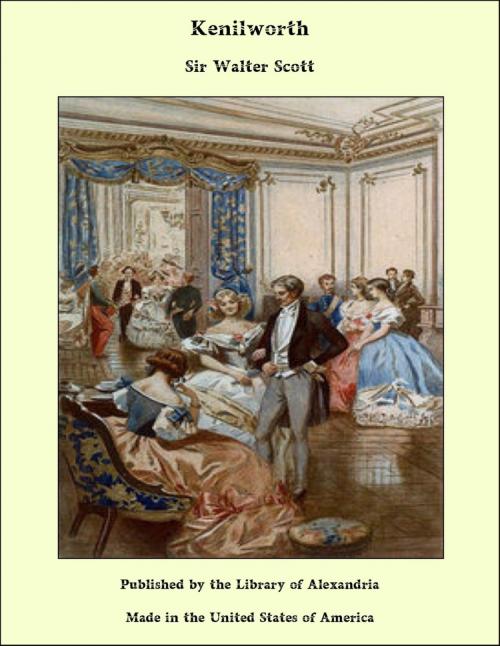| Author: | Sir Walter Scott | ISBN: | 9781465618948 |
| Publisher: | Library of Alexandria | Publication: | March 8, 2015 |
| Imprint: | Language: | English |
| Author: | Sir Walter Scott |
| ISBN: | 9781465618948 |
| Publisher: | Library of Alexandria |
| Publication: | March 8, 2015 |
| Imprint: | |
| Language: | English |
A certain degree of success, real or supposed, in the delineation of Queen Mary, naturally induced the author to attempt something similar respecting "her sister and her foe," the celebrated Elizabeth. He will not, however, pretend to have approached the task with the same feelings; for the candid Robertson himself confesses having felt the prejudices with which a Scottishman is tempted to regard the subject; and what so liberal a historian avows, a poor romance-writer dares not disown. But he hopes the influence of a prejudice, almost as natural to him as his native air, will not be found to have greatly affected the sketch he has attempted of England's Elizabeth. I have endeavoured to describe her as at once a high-minded sovereign, and a female of passionate feelings, hesitating betwixt the sense of her rank and the duty she owed her subjects on the one hand, and on the other her attachment to a nobleman, who, in external qualifications at least, amply merited her favour. The interest of the story is thrown upon that period when the sudden death of the first Countess of Leicester seemed to open to the ambition of her husband the opportunity of sharing the crown of his sovereign. It is possible that slander, which very seldom favours the memories of persons in exalted stations, may have blackened the character of Leicester with darker shades than really belonged to it. But the almost general voice of the times attached the most foul suspicions to the death of the unfortunate Countess, more especially as it took place so very opportunely for the indulgence of her lover's ambition. If we can trust Ashmole's Antiquities of Berkshire, there was but too much ground for the traditions which charge Leicester with the murder of his wife. In the following extract of the passage, the reader will find the authority I had for the story of the romance:— "At the west end of the church are the ruins of a manor, anciently belonging (as a cell, or place of removal, as some report) to the monks of Abington. At the Dissolution, the said manor, or lordship, was conveyed to one—Owen (I believe), the possessor of Godstow then.
A certain degree of success, real or supposed, in the delineation of Queen Mary, naturally induced the author to attempt something similar respecting "her sister and her foe," the celebrated Elizabeth. He will not, however, pretend to have approached the task with the same feelings; for the candid Robertson himself confesses having felt the prejudices with which a Scottishman is tempted to regard the subject; and what so liberal a historian avows, a poor romance-writer dares not disown. But he hopes the influence of a prejudice, almost as natural to him as his native air, will not be found to have greatly affected the sketch he has attempted of England's Elizabeth. I have endeavoured to describe her as at once a high-minded sovereign, and a female of passionate feelings, hesitating betwixt the sense of her rank and the duty she owed her subjects on the one hand, and on the other her attachment to a nobleman, who, in external qualifications at least, amply merited her favour. The interest of the story is thrown upon that period when the sudden death of the first Countess of Leicester seemed to open to the ambition of her husband the opportunity of sharing the crown of his sovereign. It is possible that slander, which very seldom favours the memories of persons in exalted stations, may have blackened the character of Leicester with darker shades than really belonged to it. But the almost general voice of the times attached the most foul suspicions to the death of the unfortunate Countess, more especially as it took place so very opportunely for the indulgence of her lover's ambition. If we can trust Ashmole's Antiquities of Berkshire, there was but too much ground for the traditions which charge Leicester with the murder of his wife. In the following extract of the passage, the reader will find the authority I had for the story of the romance:— "At the west end of the church are the ruins of a manor, anciently belonging (as a cell, or place of removal, as some report) to the monks of Abington. At the Dissolution, the said manor, or lordship, was conveyed to one—Owen (I believe), the possessor of Godstow then.















